
The Huawei P20 Pro and regular P20 are packed with cutting edge photography features. One particularly interesting option we touched on in our Huawei P20 Pro review is Night Mode. The shooting option boasts the ability to capture better looking low light pictures by using a very long exposure time, with a few tricks to avoid common problems like blurriness and light smudging.
At the core of Huawei's Night Mode technology is its artificial intelligence stabilization (AIS), which is really just a fancy word for software image stabilization. In this mode, the Huawei P20 camera takes one or more long exposure images using different camera settings and then applies software stitching to create the best-looking image.
You can manually dial in the exposure time for more control over the shot, or the camera can pick automatically based on the lighting conditions. The maximum manual time is 32 seconds, but I've seen the auto-mode crank this up to a minute in complete darkness, which is a long time to hold the camera steady. Although most of the time a 4 to 6 second exposure will suffice.
To test just how far Huawei's technology can go, we turned out all the lights last night and tried to take some pictures. Below you'll find a shot taken with the regular Photo Mode on the left next to the same shot captured using Night Mode on the right. I didn't use a tripod either, to test just how well Huawei's AIS technology can manage my shaky hands.
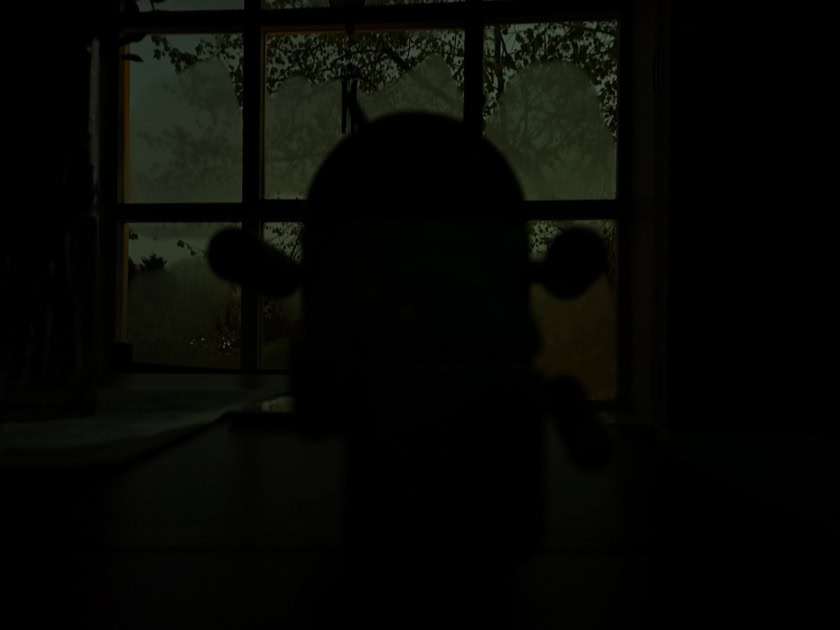 Huawei P20 Pro regular mode Huawei P20 Pro Night Mode
Huawei P20 Pro regular mode Huawei P20 Pro Night Mode 
The regular camera is as hopeless as you would expect in complete darkness. It barely picked up any of the background moonlight from the windows, caught nothing in the foreground, and had a whole heap of noise. But hold steady for a long exposure and the amount of background light leaps up. We can make out the outline of our Android figurines and even the white eyes if you squint closely enough, although the camera wasn't able to focus on them directly due to the lack of light. There's also a small amount of color creeping into the picture and far less noise. It's clearly the winner. Importantly, there's minimal shake or blurring from me holding the camera for so long, so AIS appears to do its job well.
Sadly, Huawei's Night Mode can't do much for our foreground critters in the complete absence of light. A camera can't introduce colors where none exist. To give the Huawei P20 camera a slightly better chance I introduced a very small amount of light from the overhead bulbs using a dimmer switch.
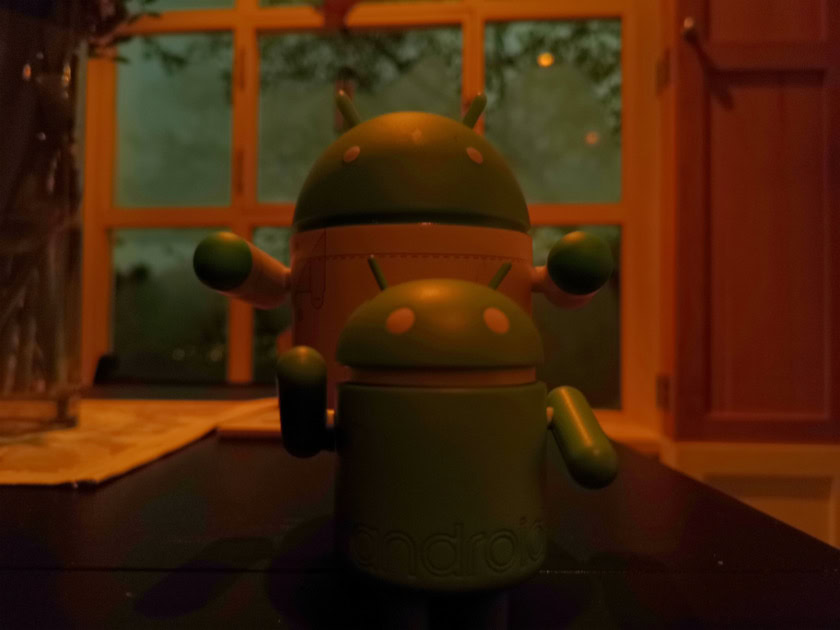 Huawei P20 Pro regular mode Huawei P20 Pro Night Mode
Huawei P20 Pro regular mode Huawei P20 Pro Night Mode 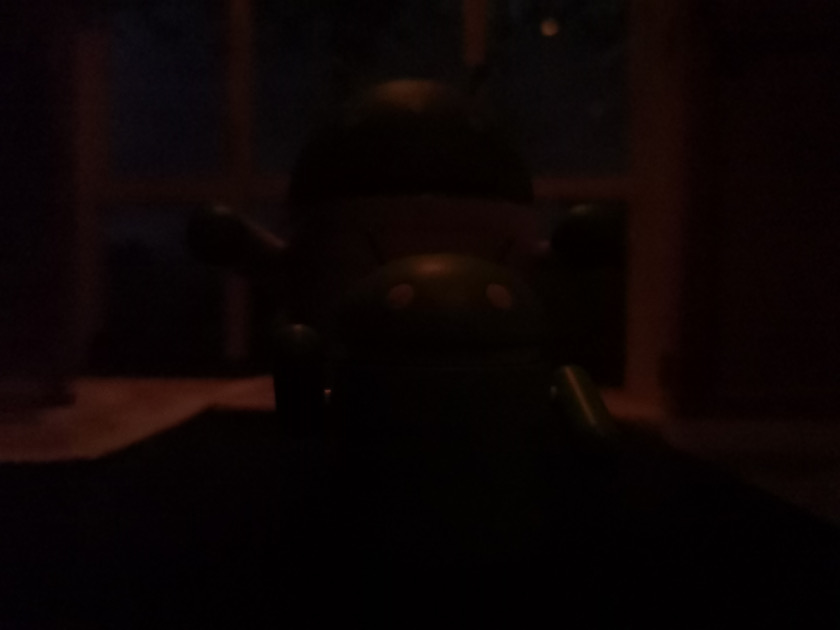
As you can see, it's still so dark that the regular camera mode can only just about focus on the foreground content, and manages to capture a small amount of color. Overall though, the presentation is still far too noisy to make this a useful picture.
Switch Night Mode on though and the image springs into life almost as if I'd suddenly switched the lights on. Most of the noise has disappeared. The camera's even managed to pick out some shadows that we definitely couldn't see in the original. There's also no real blurring to speak of. Given how I had to hold the camera still for several seconds, the AIS does pretty much as good of a job as OIS.
The picture is not 100 percent perfect. The lack of light means there's very little color information available and so we can see distinct color banding across the table and Android figurines where the software has stitched multiple exposures together. That said, Night Mode turned a hopeless shot into something actually usable, which is pretty impressive in the tough conditions we created.

In conclusion
In complete darkness, there's only so much Huawei's Night Mode can do to add color to the picture, and focusing on objects the camera can't see is still a problem. Even so, it marks a clear improvement over a standard shot and the company's in-house AIS technology seems to do an excellent job at removing blurriness.
Ideally, you'll want at least a small amount of light for Night Mode to bring otherwise hidden details and colors into focus. It's impressive just how little light is actually needed to produce a colorful picture. In more realistic scenarios you're almost bound to have at least a little light for the camera to work with.
What do you think about our results with Huawei's Night Mode? Is it something that other smartphone cameras should start including?
from Android Authority https://ift.tt/2Fuo1I8
via IFTTT
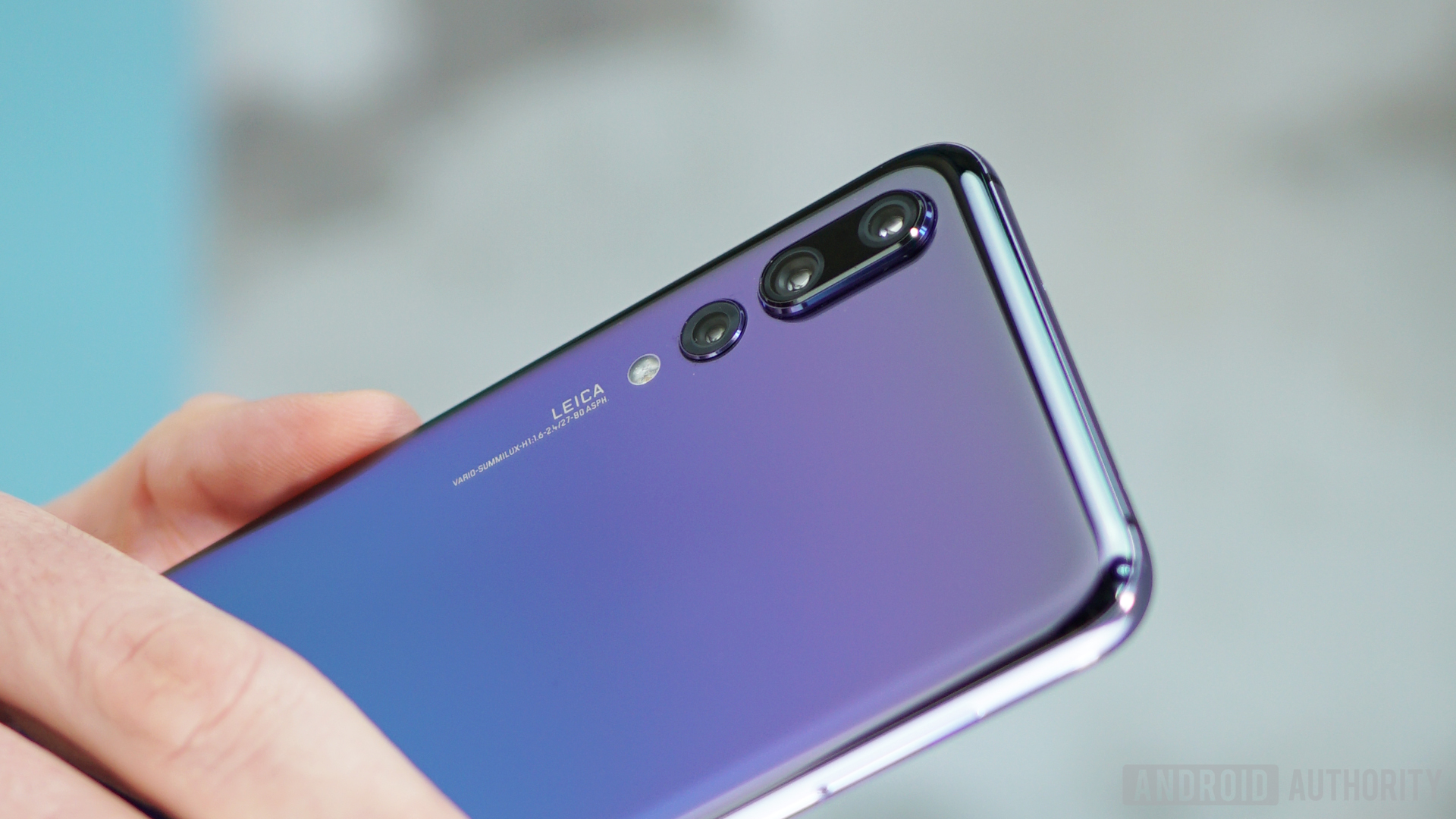
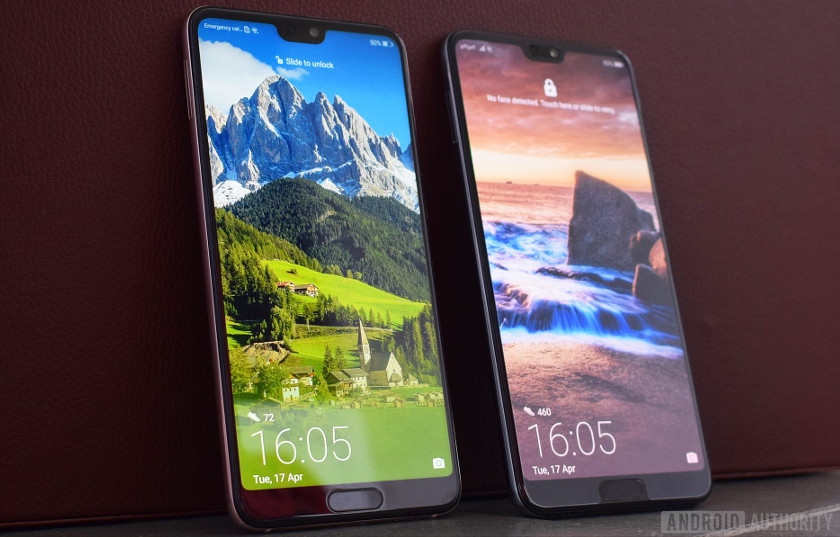
Aucun commentaire:
Enregistrer un commentaire